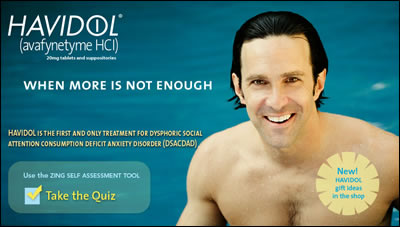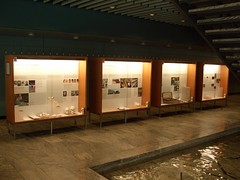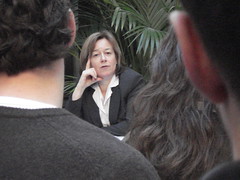Here’s another artist (cf. the former post on the Genpet) who creates web sites to comment on contemporary biomedicine.
Australian artist Justine Cooper has created a site for the mock drug Havidol which is “the first and only” treatment for Dysphoric Social Attention Consumption Deficit Anxiety Disorder (DSACDAD).
In an interview, Cooper says that her critical acumen is not only directed against some of Big Pharma’s questionable drug production and marketing activities (including some dubious “disease” constructions), but also against the wide-spread anxiety in the consumer society of never being good, successful or beautiful enough.

Taking Havidol is not without risks: Cooper suggests it may have some serious side-effects as well, including “mood changes, muscle strain, extraordinary thinking, dermal gloss, impulsivity induced consumption, excessive salivation, hair growth, markedly delayed sexual climax, inter-species communication, taste perversion, terminal smile, and oral inflammation” (from Havidol website).
Read more about Justine Cooper and Havidol in today’s issue of The Scientist. For other recent comments on Havidol, see Technorati search here.





